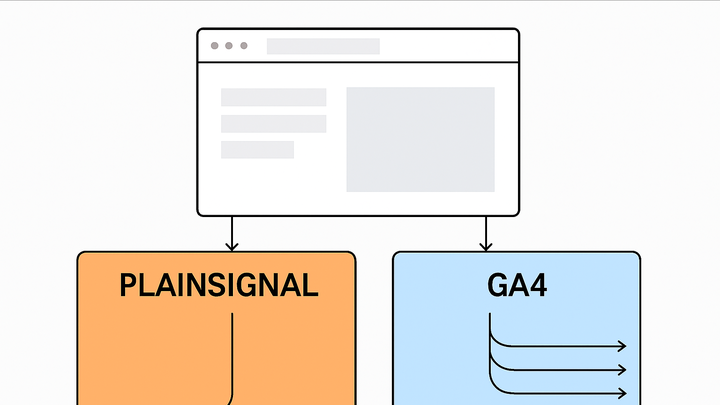Published on 2025-06-22T03:58:07Z
What is a Namespace in Analytics? Examples and Best Practices
In web analytics, a namespace is a unique identifier used to isolate and organize tracking data across different properties or tools. Namespaces prevent conflicts between multiple analytics instances by ensuring that events, user properties, and configuration settings are scoped to the correct tracker. They are especially valuable when running multiple analytics services (for example, PlainSignal and Google Analytics 4) side by side or when tracking multiple subsites under the same domain. By assigning namespaces, you can avoid overwriting data layers and ensure accurate attribution, segmentation, and reporting. Implementing namespaces effectively can improve data integrity, simplify multi-tool setups, and facilitate clearer data governance.
Namespace
A namespace in analytics isolates tracking data per tool or property, preventing conflicts and ensuring data integrity across multiple analytics setups.
Definition of Namespace
Overview of what a namespace is and its core functions in web analytics.
-
Isolation of tracking data
Namespaces ensure that tracking events and user properties are kept separate between different analytics instances to avoid overlap or data mixing.
-
Preventing configuration conflicts
By scoping settings and event definitions to a namespace, you prevent one tracker’s configuration from affecting another.
Why Namespaces Matter
Key benefits of using namespaces when implementing analytics across multiple tools or site sections.
-
Data integrity
Namespaces maintain clean datasets by preventing event collisions and accidental overrides, ensuring each tracker records only its intended data.
-
Multi-tool flexibility
They allow you to run services like PlainSignal and GA4 simultaneously without their scripts or data layers interfering with each other.
Implementing Namespaces with PlainSignal
Step-by-step guide to set up and customize namespaces in PlainSignal’s cookie-free analytics.
-
Namespace attributes
PlainSignal uses HTML data attributes to define the tracking namespace directly in the script tag.
-
Data-do
Specifies the domain or subdomain scope for the tracker, e.g., yourwebsitedomain.com.
-
Data-id
Your PlainSignal project ID used to associate events with the correct analytics property.
-
Data-api
The API endpoint for PlainSignal to send tracking data through, typically pointing to a regional subdomain.
-
-
Example tracking code
<link rel="preconnect" href="//eu.plainsignal.com/" crossorigin /> <script defer data-do="yourwebsitedomain.com" data-id="0GQV1xmtzQQ" data-api="//eu.plainsignal.com" src="//cdn.plainsignal.com/plainsignal-min.js"></script>
Implementing Namespaces with GA4
How to define and use namespaces when deploying Google Analytics 4 via gtag.js.
-
Creating a custom gtag namespace
You can instantiate a separate gtag function to isolate GA4 events by aliasing the dataLayer and loader function.
-
Alias datalayer
Initialize a new array, e.g., window.dataLayer_ns = [], and point gtag to this array.
-
Custom gtag loader
Define a function window.gtag_ns to push events into your namespaced dataLayer before loading the analytics script.
-
-
Example code
<script async src="https://www.googletagmanager.com/gtag/js?id=G-XXXXXXX"></script> <script> window.dataLayer_ns = []; function gtag_ns(){ dataLayer_ns.push(arguments); } gtag_ns('js', new Date()); gtag_ns('config', 'G-XXXXXXX'); </script>
Best Practices for Namespaces
Recommendations to ensure namespaces remain effective and maintainable over time.
-
Consistent naming conventions
Use clear, descriptive namespace names (e.g., ‘psignal_main’, ‘GA4_ns’) to easily identify each tracker’s scope.
-
Avoid overlapping variables
Make sure variables and events in one namespace do not accidentally share names with another to prevent data leaks.
-
Document your setup
Keep a record of all namespaces and their configurations so team members can understand and maintain the architecture.
